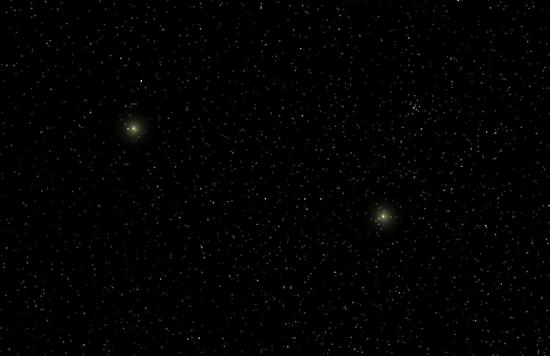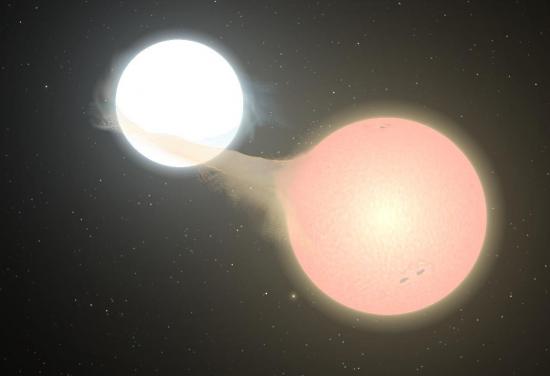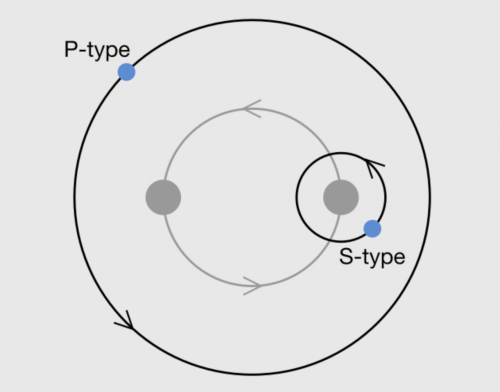BY LETTER
Binary Stars
Image from Steve Bowers | |
| Psmith, a gas giant in the JD90881616A+B system, is illuminated by both stars as they move across its sky | |
Binary stars are two stars rotating around a common centre of mass. About half of all stars are binaries of one sort or another. Many star systems in fact contain more than two stars; but these multiple systems can generally be regarded as multiple sets of binary stars orbiting one another. Castor, for instance, contains three pairs of stars.
 Image from Steve Bowers | |
| Alpha Centauri A + B, a distant binary pair with planets orbiting both stars. An even more distant companion, Proxima, orbits the pair at 12000 AU | |
Distant Binaries orbit many astronomical units from each other Many stellar systems, such as Alpha Centauri A+B, are distant binary systems, and many include planets. As a rough 'rule of thumb', distant binary stars can have planets orbiting one, or both, stars, but only if the planets orbit at a distance of less than one third of the minimum distance between the stars (this can vary significantly in the case of stars with high eccentricity values, or systems where one star is much more massive than the other). Planets that orbit just one star in a binary pair are said to have "S-type" orbits, whereas those that orbit around both stars have "P-type" or "circumbinary" orbits.
Close Binaries orbit within a few stellar diameters of each other, but are not in direct physical contact. Close binaries can have a system of planets orbiting around both stars (in so-called "P-type" orbits), but only if the orbit of the closest planet orbit is wider than more than about 3 x the distance between the stars (more on close binaries here). Both Distant Binaries and Close Binaries are known as Detached Binaries because neither star fills its Roche Lobe.
 Image from Steve Bowers | |
| Algol, a semidetached binary | |
Semidetached binaries are binary stars where one of the components fills the binary star's Roche lobe and the other does not. There is a net flow of matter from the star which does fill its Roche lobe to the other star. In some cases this flow of matter can cause extreme or cataclysmic variations in the brightness of the recipient star.
Contact Binaries These stars orbit close enough to be in physical contact, and often share a common gaseous envelope (more on contact binaries here).
Related Articles
Appears in Topics
Development Notes
Text by M. Alan Kazlev and Steve Bowers
Initially published on 08 October 2001.
Initially published on 08 October 2001.
Additional Information
S-Type and P-Type orbits: image by Phillip D Hall used under Creative Commons licence
More details here
More details here







